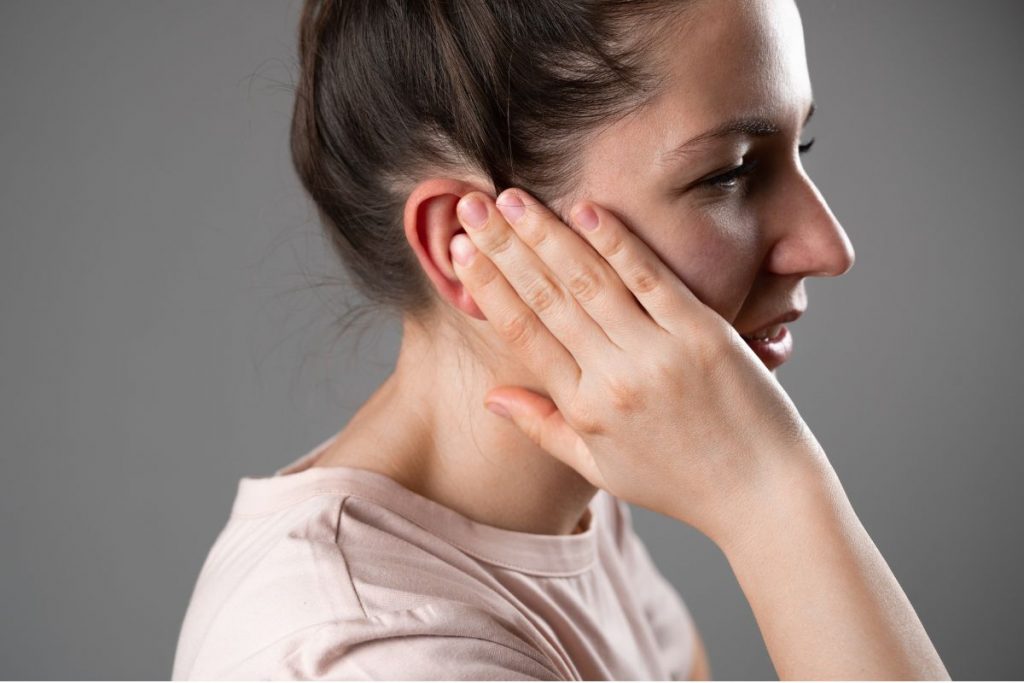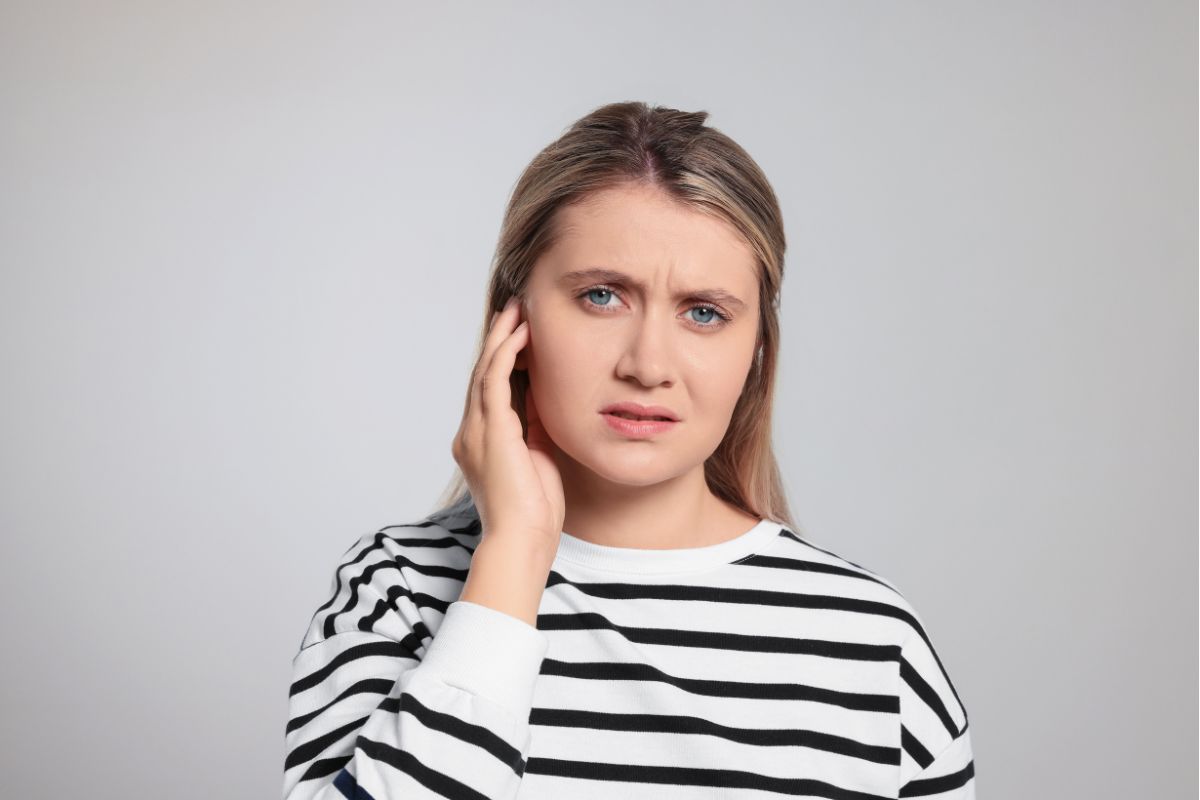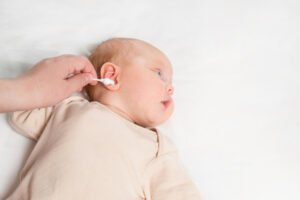Introduction - Understanding eardrum anatomy

In this article, Dr Shree Rao talks about preventing eardrum injuries while enjoying water sports. She is the Best Doctor for Cochlear Implants.
The eardrum is a thin, delicate membrane situated at the end of the ear canal, separating the external ear from the middle ear. It is typically oval or round in shape and measures about 0.1 millimeters in thickness. Composed of three layers, the eardrum possesses an outer layer facing the ear canal, a middle fibrous layer, and an inner layer that borders the middle ear.
The primary function of the eardrum is to transmit sound vibrations from the external environment to the auditory ossicles, a chain of tiny bones located in the middle ear. When sound waves enter the ear canal, they strike the eardrum, causing it to vibrate. These vibrations are then transmitted to the ossicles, specifically the malleus (hammer), incus (anvil), and stapes (stirrup). The movement of these ossicles amplifies the sound vibrations, enabling them to pass into the inner ear.
The eardrum’s role in the hearing process is indispensable. It serves as the initial point of contact for incoming sound waves and converts them into mechanical vibrations. These vibrations are subsequently transformed into electrical signals by the inner ear’s sensory hair cells, allowing the brain to interpret and perceive sounds.
Amidst the excitement of water sports, preserving auditory health, especially the fragile eardrums, is crucial. This guide explores strategies for preventing eardrum injuries during water sports, emphasizing safety and expert advice from professionals like Dr. Shree Rao.
Common causes of eardrum injuries in water sports
- Rapid changes in water pressure, especially during diving, can stress the eardrums.
- Forceful water entry into the ear canal during falls or wipeouts can transmit pressure waves to the eardrums.
- Failure to equalize ear pressure while descending underwater can imbalance pressure on the eardrums.
- Accidental collisions with watercraft or equipment can directly harm the ears and eardrums.
- Contaminated water sources may introduce pathogens, potentially causing infections and eardrum issues.
- Pre-existing ear injuries or conditions can worsen during water sports, leading to complications.
- Exposure to loud noises from watercraft or equipment can harm the eardrums over time.
- Lack of proper ear protection, like swim earplugs or swim caps, leaves the ears vulnerable.
- Inadequate ear drying after water activities can lead to trapped moisture and increased infection risk.
- Frequent, high-velocity water entries into the ear canal can result in cumulative stress on the eardrums.
Recognizing early signs of eardrum damage
One of the primary early signs of eardrum damage is ear pain or discomfort. Individuals may experience sharp, stabbing, or continuous pain in the affected ear. The pain may vary in intensity but should not be ignored, especially if it persists.
Eardrum damage can result in the leakage of fluids from the ear canal. This fluid may be clear, pus-like, or bloody. Any unexplained drainage from the ear should raise concerns and prompt a visit to a medical professional.
A noticeable decrease in hearing ability, either partial or complete, can indicate eardrum damage. Individuals may find it challenging to hear sounds or conversations clearly. This hearing impairment may be temporary or long-lasting, depending on the severity of the damage.
Tinnitus, characterized by a persistent ringing, buzzing, or hissing sound in the affected ear, can be an early sign of eardrum damage. While tinnitus can have various causes, it should not be disregarded when accompanied by other symptoms.
Some individuals with eardrum damage may experience sensations of fullness or pressure in the affected ear. This feeling can be uncomfortable and may coincide with other symptoms.
Eardrum damage can affect the balance mechanisms in the inner ear, leading to episodes of vertigo or dizziness. Individuals may feel unsteady, lightheaded, or as if the room is spinning.
Heightened sensitivity to loud noises or discomfort when exposed to sudden, sharp sounds can be an early sign of eardrum damage. Individuals may instinctively protect the affected ear when exposed to loud environments.
Persistent itching or irritation within the ear canal may be indicative of an underlying issue, including eardrum damage. Scratching the ear can potentially worsen the damage.
If there is a noticeable foul odor associated with ear discharge, it could suggest an infection related to eardrum damage. This should be addressed promptly by a healthcare provider.
In some cases, individuals with eardrum damage may notice reduced mobility or flexibility of the affected ear. This can manifest as difficulty moving the earlobe or changes in how the ear responds to touch.
Tips for safe diving and snorkeling
- Prioritizing safety is paramount, and individuals should seek proper training from certified instructors to ensure a safe diving and snorkeling experience.
- Investment in high-quality and well-maintained diving and snorkeling gear is advised, as it plays a crucial role in safety and comfort during underwater activities.
- Before embarking on any underwater excursion, it is essential to check weather conditions and water conditions to make informed decisions regarding safety.
- Diving or snorkeling with a buddy is strongly recommended, as having immediate assistance can be critical in case of emergencies.
- Respecting personal limits and staying within one’s training and experience level is a fundamental safety practice that should not be overlooked.
- Equalizing ear pressure during descent is vital to prevent ear barotrauma, a common issue during underwater activities.
- Monitoring dive times and depths is essential to avoid decompression sickness, a potentially serious condition that can arise from ascending too quickly.
- Maintaining proper hydration and ensuring adequate rest is crucial for maintaining optimal physical and mental conditions while diving or snorkeling.
- Respecting marine life and ecosystems is not only an ethical responsibility but also helps prevent damage to fragile organisms and habitats.
- Being prepared for emergencies involves knowledge of nearby medical facilities and having access to signaling devices for communication and safety.
- Familiarity with local diving and snorkeling regulations is important to ensure compliance with rules and guidelines set by local authorities.
- Diving within the scope of one’s certification is advisable, and individuals seeking advanced dives should pursue further training to enhance their skills and safety.
- Staying well-informed about safety practices, equipment advancements, and emergency procedures is essential for responsible and safe diving and snorkeling.
Preventing eardrum injuries in swimming and surfing

- Proper ear protection, such as swimmer’s earplugs, is essential for preventing eardrum injuries during water activities.
- Regular ear inspections can help individuals detect early signs of irritation or damage to the eardrums.
- Avoid aggressive ear cleaning practices to prevent potential eardrum damage; refrain from inserting objects into the ear canals.
- Learning proper swimming techniques, including ear equalization methods, reduces pressure on the eardrums while underwater.
- Surfers should focus on balance and mastering duck diving techniques to minimize water pressure on the ears during wave navigation.
- After water activities, ensure thorough ear drying by tilting the head and gently pulling the earlobe to aid water drainage.
- Specialized ear drops designed to evaporate trapped water can be used to keep the ear canals dry and reduce the risk of infection or injury.
- Wearing a swim cap that securely covers the ears can effectively prevent water from entering during swimming.
- Promptly consult an ENT specialist if any ear discomfort or symptoms persist after water activities for a thorough examination and appropriate treatment.
- Staying informed about safety guidelines and recommendations is crucial to ensure a safer experience in water sports and prevent eardrum injuries.
Eardrum safety for water skiing and wakeboarding
- Utilize specialized swim earplugs for enhanced eardrum protection during water skiing and wakeboarding.
- Perform regular ear inspections to promptly identify any discomfort, pain, or itching indicative of potential eardrum issues.
- Avoid aggressive ear cleaning practices that may harm the eardrums, increasing vulnerability during water sports.
- Master proper equalization techniques to balance pressure on the eardrums while submerged in water.
- Prioritize keeping the head above water during falls to prevent high-speed water entry into the ears, reducing injury risk.
- Employ protective headgear that covers the ears, adding an extra layer of defense against water entry during water sports.
- Ensure thorough ear drying post-activity by tilting the head and gently pulling the earlobe to facilitate water drainage.
- Utilize specialized ear drops designed to evaporate trapped water in the ear canals, maintaining dry ears and reducing infection or injury risk.
- Seek prompt consultation with an ENT specialist if persistent ear discomfort or symptoms occur after water activities.
- Stay informed about water skiing and wakeboarding safety guidelines to enhance awareness and minimize the risk of eardrum injuries.
Managing eardrum injuries
- Refrain from inserting foreign objects or cotton swabs into the ear canal to prevent exacerbation.
- Follow the prescribed medication regimen, including antibiotics and pain relievers if recommended by the doctor.
- Allow for adequate rest and recovery while avoiding activities that expose the ear to moisture, pressure changes, or loud noises.
- Protect the injured ear from water during bathing or swimming using custom-fit swim earplugs or specialized ear covers.
- Attend regular follow-up appointments with the ENT specialist to monitor healing progress and make necessary treatment adjustments.
- Consider surgical intervention, such as tympanoplasty, for severe eardrum injuries that do not heal naturally.
- Explore hearing rehabilitation or auditory therapy if needed to regain optimal hearing function post-treatment.
- Adopt preventive measures, including good ear hygiene, ear protection in noisy environments, and avoiding loud noises.
- Implement lifestyle adjustments like using earplugs or earmuffs in situations where eardrum protection is necessary.
Eardrum protection strategies for water enthusiasts
- Water enthusiasts should invest in specialized swimmer’s earplugs to create a watertight seal in the ear canal.
- Regular self-examinations of the ears are essential to identify any discomfort, pain, itching, or unusual discharge promptly.
- Avoid aggressive ear cleaning practices that involve inserting objects like cotton swabs into the ear canal.
- Learn proper ear equalization techniques to balance pressure on the eardrums during underwater activities.
- Surfers can focus on improving balance and mastering duck diving techniques to minimize water pressure on the ears.
- After water activities, ensure thorough ear drying by tilting the head and gently pulling the earlobe to facilitate water drainage.
- Consider using specialized ear drops designed to evaporate trapped water in the ear canals.
- Wearing a swim cap that securely covers the ears can effectively prevent water entry during swimming.
Conclusion
In conclusion, safeguarding one’s eardrums while reveling in water sports is paramount for preserving auditory health and overall well-being. By adhering to safety guidelines, wearing appropriate ear protection, and seeking expert advice from professionals like Dr. Shree Rao, individuals can enjoy their aquatic pursuits with confidence. Dr. Shree Rao’s commitment to ear health underscores the importance of preventing eardrum injuries, ensuring that the soothing sounds of the waves remain a source of pleasure, not harm.

Why consult EarSurgeon, Dr. Shree Rao?
Dr. Shree Cuddapah Rao is acclaimed as one of the best pediatric ENT specialists in Hyderabad. With 10+ years of deep domain experience in the field of ENT, she is the director at Dr. Rao’s ENT Super Specialty Hospital. She underwent specialized training in Rhinoplasty / Facial Plastic surgery at Singapore General Hospital, Singapore. She also underwent advanced training in cochlear implant surgery under Padmashri Dr. Milind V Kirtane and had a Fellowship in a cochlear implant. Having performed over 200 successful cochlear implants for patients worldwide, Dr. Shree Cuddapah Rao is also the recipient of several prestigious accolades in the domain of ENT. Dr. Shree Rao is one of the best ent doctor in hyderabad, to book an appointment click here.
Are you looking for
then you have landed at right place!







